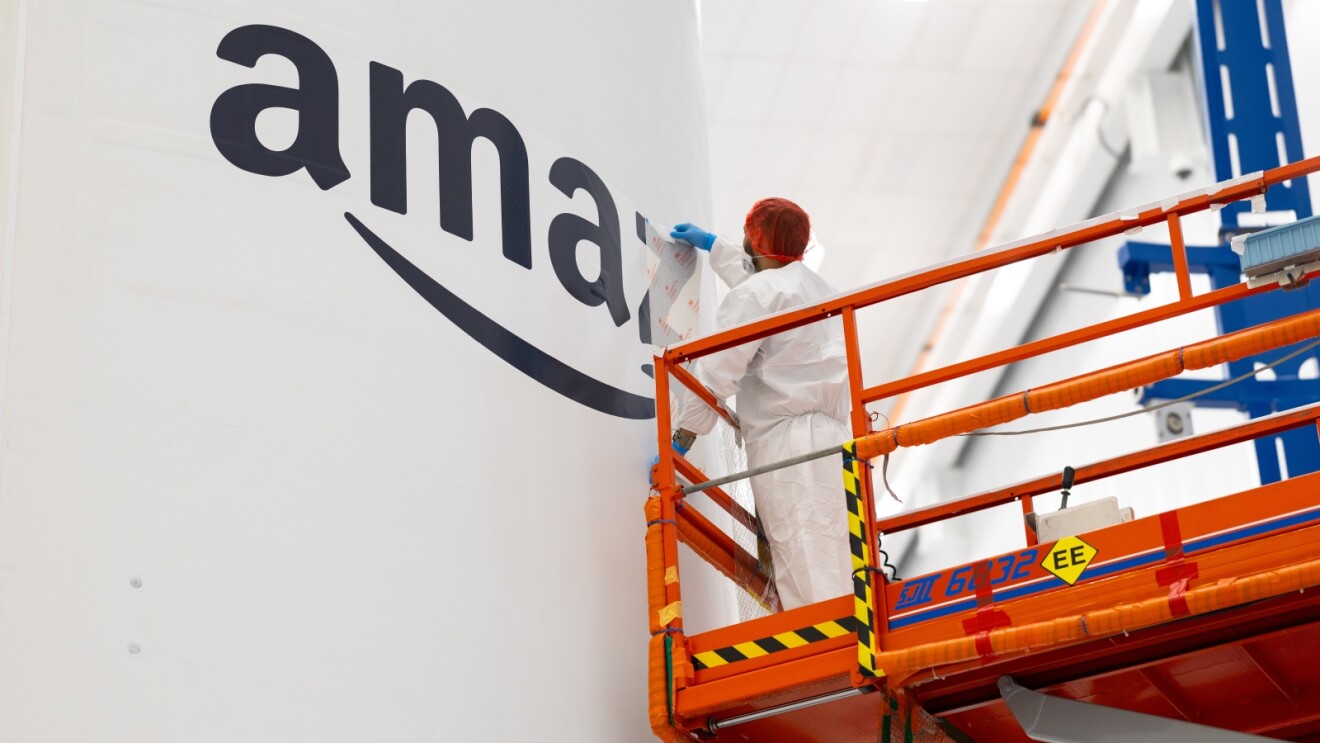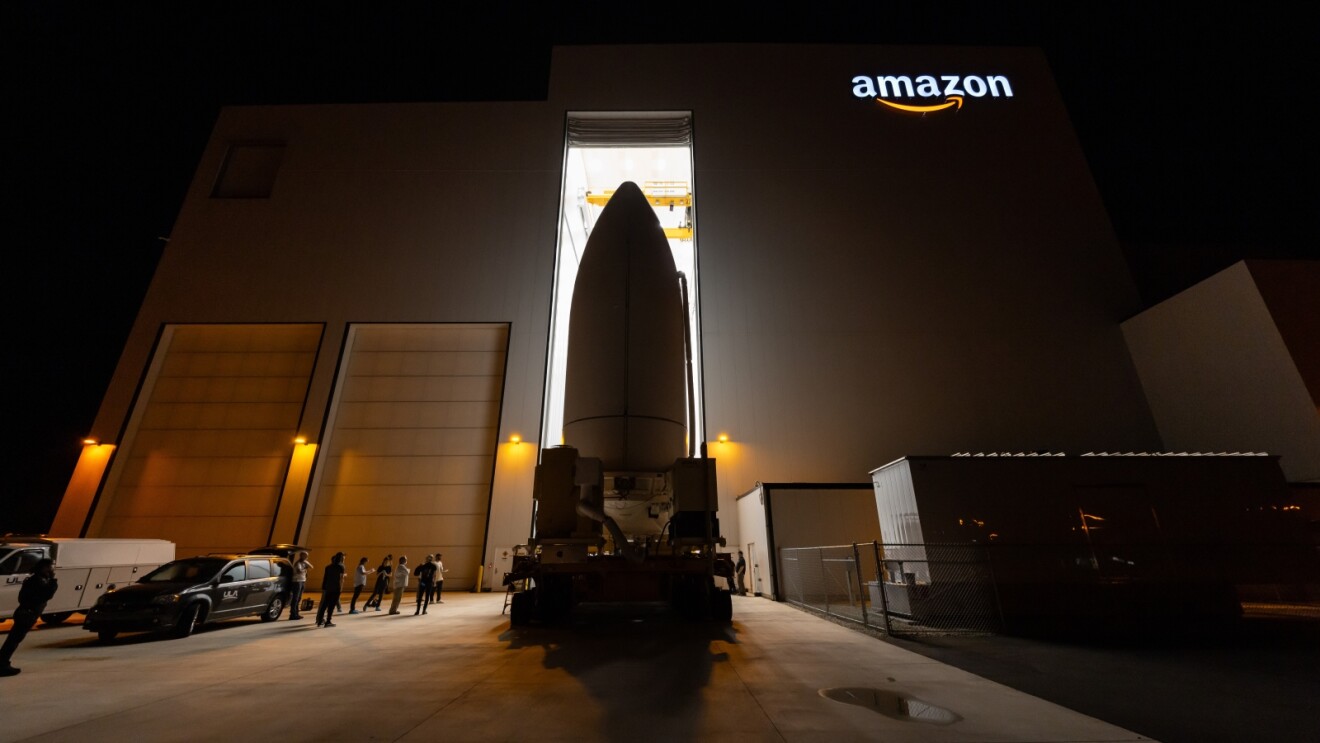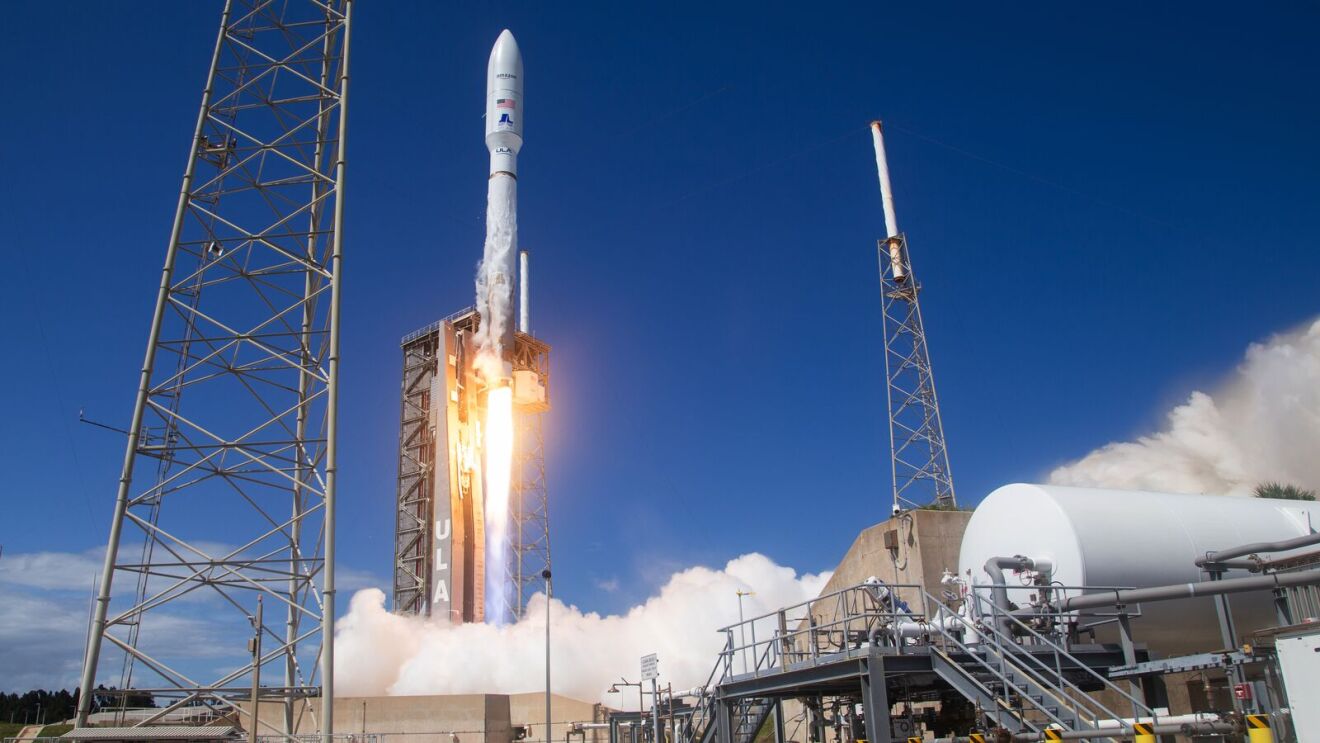|
Getting your Trinity Audio player ready...
|
Amazon’s long touted answer to Elon Musk’s Starlink and Eutelsat’s OneWeb has moved one step closer, with a launch date scheduled for the first Project Kuiper Internet satellites.
Amazon announced that “Project Kuiper is set to send its first full batch of satellites to space” and “the mission, named “KA-01” for Kuiper Atlas 1, will launch on a United Launch Alliance (ULA) Atlas V rocket from Cape Canaveral Space Force Station, Florida, and deploy 27 satellites on Wednesday, 9 April.”
It comes after the UK communications regulator Ofcom in February had “granted an earth station network licence to Amazon Kuiper Services Europe SARL for its non-geostationary orbit (NGSO) satellite system, which is also known as ‘Kuiper’”.

Image credit Amazon
Project Kuiper
United Launch Alliance is a joint venture from Boeing-Lockheed Martin, which since 2006 has been offering launch services for other firms.
Amazon said the KA-01 mission will deliver the first 27 Project Kuiper satellites to an altitude of 280 miles (450 kilometres) above Earth.
The ULA’s “Kuiper 1” mission page will provide updates on the launch as well as a launch livestream that will begin approximately 20 minutes ahead of liftoff.

Image credit Amazon
Amazon said Project Kuiper will deliver high-speed, low-latency internet to virtually any location on the planet, and it expects to begin delivering service to customers later this year.
“Our first-generation satellite system will include more than 3,200 advanced low Earth orbit satellites, and we’ve secured more than 80 launches to deploy that initial constellation, with each one adding dozens of satellites to the network,” it stated. “The KA-01 mission is just the first step in that process.”
“We’ve designed some of the most advanced communications satellites ever built, and every launch is an opportunity to add more capacity and coverage to our network,” said Rajeev Badyal, VP of Project Kuiper.
“We’ve done extensive testing on the ground to prepare for this first mission, but there are some things you can only learn in flight, and this will be the first time we’ve flown our final satellite design and the first time we’ve deployed so many satellites at once,” said Badyal. “No matter how the mission unfolds, this is just the start of our journey, and we have all the pieces in place to learn and adapt as we prepare to launch again and again over the coming years.”
Upgraded satellites
In October 2023 Amazon’s Project Kuiper had launched two prototype satellites (known as Kuipersat-1 and Kuipersat-2) on the first flight of United Launch Alliance’s then new Vulcan Centaur rocket.

Image credit Amazon
But now the satellites flying on the 9 April KA-01 mission are described as a significant upgrade from the two prototype satellites it successfully tested during the Protoflight mission in October 2023.
Amazon said it had improved the performance of every system and sub-system on board, including phased array antennas, processors, solar arrays, propulsion systems, and optical inter-satellite links. In addition, the satellites are coated in a dielectric mirror film unique to Kuiper that scatters reflected sunlight to help make them less visible to ground-based astronomers.
Amazon said that following the KA-01 mission, it will continue to increase its production, processing, and deployment rates as it prepares to begin delivering service to customers.
Amazon said it has already begun shipping and processing satellites for the next mission: KA-02 will also use a ULA Atlas V rocket and launch from Cape Canaveral Space Force Station.





